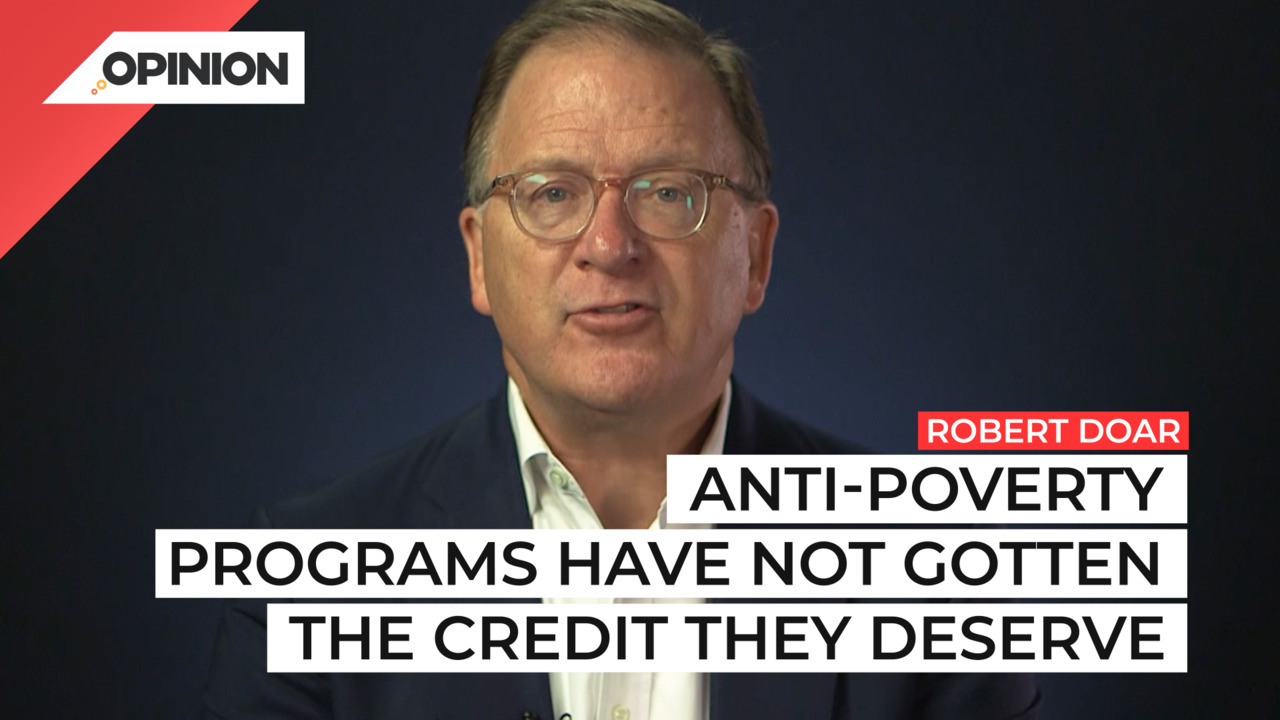
Commentary
-
Our commentary partners will help you reach your own conclusions on complex topics.
I have long thought that government statistics aren’t telling the whole story about poverty and inequality in America.
During 20 years of leading social services programs in New York, I saw a tremendous amount of aid flowing from federal, state and local treasuries to low income households.
And even as I saw many of our programs, reducing poverty in real time by combining work requirements, with work rewards, the official poverty rate has hovered around 13%. And as a result, our anti poverty programs have not gotten the credit they deserve. And many people still believe that poverty in America is far worse than it really is.
Now, government statistics have also fostered the popular portrayal of America as a vastly unequal country. Were in the words of Senator Bernie Sanders of Vermont, a quote handful of billionaires have enormous wealth and power, while working families have been struggling in a way we have not seen since the Great Depression.
claims like this one rely on the Census Bureau’s official household income measure, which is the standard for federal estimates of Americans wealth.
A new book offers compelling evidence that the Census has been measuring income wrong, and misdirecting public policy in the process.
In the myth of American inequality, how government biases policy debate, Phil Gramm, an economist at AI, as well as a former United States Senator, and his co authors, John early and Robert Eklund, have analyzed 50 years of federal data to set the record straight on the last 50 years of household income in America.
They first looked at how the census measures income when the Census Bureau adopted the current household income measure. In 1967. The Census Bureau decided not to subtract taxes, and did not include all transfer payments. Graham and early found that as a result, the census measure left out two thirds of all federal state and local transfer payments going to households, most of whom were near the bottom of the income scale. And because they ignore all of these payments, the official statistics underestimate the income received by households with lower earnings from work and overestimate the real income enjoyed by households with higher news.
And by reviewing 50 years of census data and adding and transfer and subtracting taxes, Graham and early revealed a very different picture of income in America. First, as the book’s title suggests, their data contradicted popular claims of income inequality. Instead of a 16 to one ratio between top households income and bottom households, which is reported by the census, the authors found a four to one ratio. Instead of finding a widening gap between the top and the bottom, they discovered the transfer payments have largely equalized the incomes received among the bottom 60% of Americans, regardless of how much they work. From 1967 to 2017. Real government transfers to the bottom quintile of households rose by more than 269%. While the after tax incomes of those in the middle only rose by 154%.
According to the authors, only 36% of those in the bottom quintile worked on the books at all in 2017, and on average their households earned more than $6,900 a paltry amount, but they received more than $48,000 in after tax and transfer income. Those who earn at the second lowest quintile brought home $31,000 in earnings from work but wound up with $50,000 in after tax and transfer income, leaving them just 3.5%. above those at the bottom.
The amount of government transfers which are available without work requirements, has made not working a viable alternative for Americans. That is likely driven the decline in labor force participation rates, which AI economist Michael strain is called a slow burning catastrophe as more and more Americans disconnect from work and the dignity and satisfaction that comes from earning your own success.
In a recent Wall Street Journal op ed Graham an early report what they say
is their blockbuster finding on a per capita basis, the average bottom quintile household receive 14% more income than the average second quintile household, and 3.3% more than the average middle income household.
Now many middle class Americans feel like they’ve been left behind in these findings, which suggests that they have been, many of them work far more and end up bringing home the same income as those who work very little or not at all. But their struggles have been left out of the policy debate, in large part because they are not evident in the official government statistics. And this may be a primary cause of much of the middle and working class discontentment that has fueled so much of the anger in politics these days.
We can start to address their concerns by collecting and reporting the information about income accurately. In their book, Graham early and Eklund argue that Congress must require the Census Bureau to include taxes and transfers in their income measures. And I think that makes sense. We can also restructure our government aid programs so that they are always promoting work as the essential path out of poverty.
-
Affirmative action ruling consistent with struggle against US racist past
When the Supreme Court struck down affirmative action programs at the University of North Carolina and Harvard, conservatives celebrated the decision, hailing it as a victory for a “colorblind” interpretation of the Constitution. Former President Donald Trump praised the ruling as a “great day for America.” Democrats, on the other hand, criticized the decision, arguing… -
End of pandemic SNAP benefits a chance to improve food program
Millions of struggling American families in 32 states are now receiving less federal aid to buy food as the emergency funding for the SNAP food stamps program has expired. The emergency allotment, spurred by the COVID-19 outbreak, boosted the money that recipients received by at least $95 per month from SNAP, which stands for “supplemental… -
Elites have lost the trust and confidence of Americans
The Cambridge Dictionary defines the liberal elite as “a group of people with education, money, and other advantages, often living in cities, who have liberal political views and are seen as not understanding the problems and views of ordinary people.” Former President Donald Trump’s war on elites was central to his 2016 campaign and could be weaponized again should he run in 2024. Straight Arrow News… -
American men need to start taking more personal responsibility
Some members of the Republican party, such as former President Donald Trump and Sen. Josh Hawley (R-MO), blame Democrats for starting a war against American men. These voices want government action taken to protect men from policies meant to undermine their roles in society. But is government intervention really the answer? Straight Arrow News contributor Robert…
Latest Opinions
-
Test post with no body copy
-
 Getty Images
Getty Images
How does dyeing the Chicago River on St. Patrick’s Day impact fish?
-
 Getty Images
Getty Images
Trapped Antarctic researchers reporting death threats from colleague
-
 Getty Images
Getty Images
Democratic Party’s favorability ratings drop to record low: Poll
-
 Getty Images
Getty Images
Israel accused of ‘genocidal acts’ against Palestinians in new UN report
Popular Opinions
-
In addition to the facts, we believe it’s vital to hear perspectives from all sides of the political spectrum.






